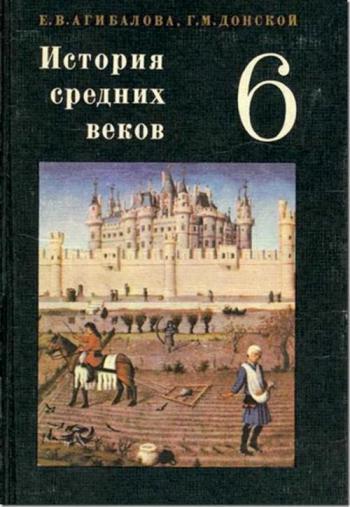1061
Legends and myths of the Middle Ages

In the Middle Ages 9 out of 10 people died, not having lived up to 40 years
Precise data on life expectancy in the distant past, we, of course not, but historians say that in the Middle Ages, it was somewhere around 35 years. (In any case, 50% were born lived to this age). But this does not mean that people were dying, only reaching 35 years. Yes, the average life expectancy was about this, but many died in childhood. We do not know what the percentage is, but assuming that somewhere 25% die before they reach five, and we will be far from the truth. About 40% died in adolescence. But if a person is lucky enough to survive childhood and youth, he had a good chance to live to 50 and up to 60. In the Middle Ages were even people who live to be 70 or 80.
In the Middle Ages, people were much lower than we
Not true! People were a little bit lower. Judging by the skeletons found in karakki "Mary Rose", the growth of the sailors was somewhere between 5 feet 7 inches and 5 feet 8 inches (ie, about 170 cm.). Burial of the Middle Ages and other periods also show that men were slightly lower than our contemporaries, but not much.
People of the past were very dirty and rarely bathed
It is obvious from the facts suggest that people have tried to keep themselves clean. Absolutely, and that most people bathed and changed clothes often. They also tried to keep clean their homes. The notion that men were dirty and smelled bad - a myth.
Perhaps it arose, as people rarely take a bath. Until the 19th century, it was easy to heat large quantities of water immediately. Imagine that you have heated the boiler with water and poured it into the tub. While you will warm the second portion of the first cooled. The Romans solved this problem with the help of the public baths, which is heated from below.
After the fall of the Roman Empire, it became easier to bathe naked. In hot weather, people bathe in the rivers. It is also known that people often wash their clothes.
Once the pope under the name John was a woman
It is unlikely that this is true. According to legend, the Pope, the woman was on the Holy See 2 years - from 855 to 858g. In fact, Leo IV occupied the papal throne from 847 to 855g., And Benedict III - from 855 to 888g. The gap between them - only a few weeks.
According to legend, the Pope, the woman was dressed as a man, and no one did not suspect anything strange until the head of the Catholic Church in the eyes goggle environment not fathered a child. It is surprising that no one even noticed the pregnancy.
The first mention of the Pope, a woman came 200 years after her alleged existence. If this is true, why no one has written about this at the time? This was to be a sensation for the whole of Europe, so why nobody did?
Perhaps because the story are fictitious.
King John signed the Magna Carta
No, he did not sign! He put on it wax seal, but did not sign.
In the Middle Ages, scientists spent hours in the debate about how many angels can fit on the head of a pin
There is no evidence that anyone in the Middle Ages was asked such a stupid question. People who lived in the Middle Ages were not fools.
Some medieval armor was so heavy that the knights raised their horses using ropes
It is not true. Armor, of course, were heavy, but not so.
In anticipation of the 1000 AD People across Europe have begun to panic. They were afraid that Jesus Christ will return and come to an end
There was no evidence that such a panic occurs there. No chronicler of the time does not mention anything unusual. Only centuries later writers have argued that it was before the onset of 1000. It is part of a larger myth that the Middle Ages people were stupid and gullible (even more than we do!)
The Vikings wore helmets with horns
No evidence that Vikings wore horned helmets battle, no. Also, there is no evidence that they were wearing helmets with wings.
Most church yard yew grew, because men yew wood was used to make bows
This is almost certainly a myth. Records indicate that the master is made bows preferred yews from South and Eastern Europe (English yew is not well suited for this purpose). In fact, in the churchyard yews grow because their leaves are poisonous. Villagers could allow livestock to graze in the churchyard. Yew trees are a good way to stop them.
Joan of Arc was burned as a witch
It is not true. She was burned for heresy (because the dresses like a man).
Before Columbus, people thought the Earth was flat
In fact, in the Middle Ages, people knew that the Earth was round.
Columbus discovered America
No. It is known that the ancestors of today's Americans have come to North America for thousands of years before Columbus. Moreover, Columbus was not even the first European to discover America. The first European who saw the continent was Bjarni Heryulfsson. He sailed to Greenland in 985 AD, when he saw a new land (ashore he did not come out). After about 15 years, a man named Leif Erickson led an expedition to the new land. He gave the names of some of North America: Helluland (land of flat stones), Markland (country covered by forest) and Vinland (land of grapes). Erickson spent the winter in Vinland. More he did not return there, while others returned to the Vikings, but they have not managed to create a permanent colony there.
Centuries later, Columbus thought he could swim straight from Europe to China across the Atlantic Ocean. Columbus underestimated the size of the Earth. He did not know that there are North and South America and the Pacific. Columbus made four travel Atlantic and although he landed on several Caribbean islands, he had never set foot on the continent of North America.
Blekgit (Black Heath) in London got its name because there were buried the victims of the London plague (the so-called "black death»)
It's definitely not the case. This place was called the Black heath in times of Cadastral Book (inventory of land in England, produced by William the Conqueror in 1086g.), Almost 300 years before the plague 1348-49gg. The fact that the Black Heath got its name because there were selling black slaves, is also a myth. It is not known where in fact there is the name. Perhaps because of the topsoil. In any case, it has nothing to do with the plague or black slaves.
Golf - is an English acronym that means "gentlemen only, ladies are not allowed» (golf - 'gentlemen only ladies forbidden')
The word "golf" is derived from the old Danish word "kolf", which meant "club". (In the Middle Ages the Danes have played clubs, but the actual golf originated in Scotland). The Scots have changed the word to "Galway" or "Goff", with time it became known to us in the "golf».
Archers wore his arrows behind
Only when they rode on horseback. Usually, archers wore boom in containers strapped to the belt (much easier to get the arrow to the bow of the belt than because of the shoulder). Robin Hood is usually depicted with a quiver of arrows on his back. If Robin Hood ever existed, he probably wore the arrows on the belt.
In the Middle Ages spices were used to hide the fact that the meat is spoiled
This is not true for one simple reason - the spices were very expensive and could only use them rich. They, of course, did not eat spoiled meat. They ate the meat of the highest quality! Spices have been used to improve the taste.























